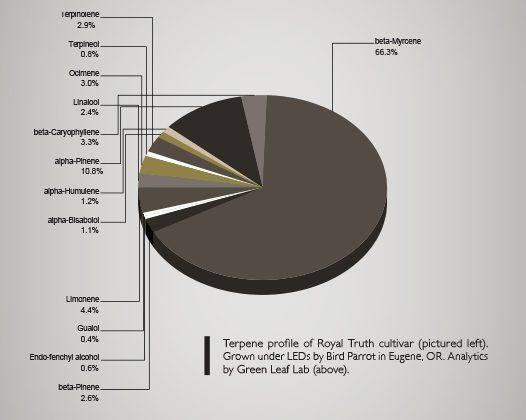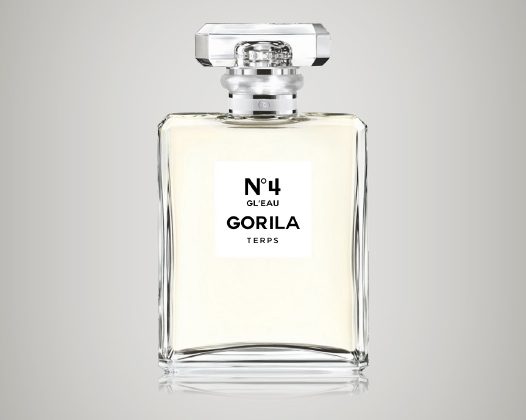Any well-educated cannabis scientist, physician, consumer, or patient has noticed a variety of cannabis strains named after berries, fruits, and plants. Cannabis strain names have even found inspirations in animal names, paints, glues, and fuels. For the average consumer, the name of the strain signals an association of smells and tastes and a learned or pre-conceived notion of how it may make them feel. For example, a person may love blueberries and goods with the reference to blueberry may trigger a greater degree of interest. If the product is representative of its name and, in this case, is matched with a good quality appearance of the flower and even blue color, and with a blueberry-like smell, this may all add up, converting into a purchase (or sale).
Generally, most consumers will purchase intoxicating cannabis products that forecast comfort and positive associations, by name or flavor. Those associations will be visual and olfactory. However, effects of consumed cannabis physiologically may hardly represent a state of feeling “blueberry,” “purple,” “Maui Wowie,” or “diesel.” While smelling terpenes and looking at distinct cannabis flowers creates individualized associations and perceptions, its intoxicating effects are dependent on the interactions of a variety of cannabinoids and terpenes in the flower1-4. Consumption of a select strain may cause a much different physiological and psychological effect than its original “flavor” association. It is hard to imagine, though, what flavor or smell associations are conjured in the case of a strain name like “Purple Monkey Balls.”
As discussed in previous installations, cannabis terpenes on their own have biological and neuropsychological effects5-9. Unlike terpenes, cannabinoids have no smell. So, when purchasing a new strain or product for the first time, consumers are sold on smells and looks. One could even argue that smell is the main selling component. Unfortunately, smells cannot be conveyed online. Yet, smells sell. Nobody better than the perfume industry knows how to sell smells. Like perfumes, new cannabis smell and terpene vendors and brands are popping up online and in stores, and there seems to be a fast growing (strain-specific) terpene market.

STRAIN-SPECIFIC TERPENES
“Strain-specific terpenes” is the new buzzword. Searches for strain-specific terpenes return many websites that sell cocktails of terpenes named after popular cannabis strains. You can find your classic names, like Sour Diesel, Super Lemon Haze, and a variety of OG Kushes (and not so OG). For an aficionado, these classic names may remind a unique flavor and post-consumptive behavior associations, good or bad, but distinct and individualized to each strain. But do the “strain-specific” terpene cocktails recreate the same smell and feeling of the actual flower?
In cannabis flowers, terpenes are produced and stuck to them and the trichomes, much like the perfume molecules get stuck on our clothing or skin. Terpenes are produced at different ratios during the growth cycle of the plant and their final composition is very much dependent on the stress levels just before the harvest time10. The same strain grown in the near-identical conditions can produce a slightly different cannabinoid and terpene profile. Thus, to date, to my knowledge, there is no system or grow that has standardized harvesting to replicate 100 percent or even 80 percent of the same strain’s chemical output cycle after cycle.
Standardized strain-specific chemical entourages can be eventually accomplished using “strain-specific” genetics and by having complete control over the growth (inputs) and the chemical composition (output) of the plants. Indoor Harvest, Inc. may have that growing system to allow for grow standardization, by controlling the inputs and tracking the outputs of the plant. With advancements and sophisticated controls, this and similar grow systems could lead to true standardized flower outputs, yet the exact chemical composition (output) would still likely have a variability of a few to tens of percentages.
Coming back to strain-specific cocktails, how are they standardized? Are they standardized? The answer is that the cocktail itself can be standardized by mixing individual terpenes in specific ratios. However, it’s the link between the plant and standardized cocktail that is not clear. Furthermore, although one producer has his own standardized recipe for Durban Poison (DP) or Grape Ape (GA), another company may use a similar, but not the exact same formula to create their own, subjective strain-specific DP or GA formulas.
I heard suggestions, like: “just look at the terp description on Leafly.” Indeed, terpene descriptions exist there and on variety of analytical laboratory websites. Yet even the same analytical laboratories will report a different terpene profile for the same plant that has been cured in two different ways (temperature, humidity, and duration). This raises a question of a need to standardize strain outputs by at least doing a rigorous comparative analysis of the terpene profiles across many laboratories and geographical regions.
Nonetheless, the biggest problem is that chemical “strain- specificity” in these chemical cocktails is not standardized across different producers. This could not be standardized, because cannabis growth across different environments has not been standardized. Furthermore, naturally on the plant, terpenes inhabit different areas of the flowers and trichomes. In a terpene cocktail, this “strain-specific” smell molecule architecture can be recreated only partially, leading a most of “strain-specific” cocktails creating an unnatural sensation of chemical cleaners that smells like pine or lavender, or fuel. Many manufacturers are awaiting standardized and naturally smelling and tasting “strain- specific” cocktails.

IS THERE A NEED TO STANDARDIZE “STRAIN- SPECIFIC” COCKTAILS?
Cannabis consumer psychology and behavior beg further analysis. Currently, Google Scholar or PubMed do not return any publications on the strain-specific terpenes or the methods of their standardization. Tracking and comparing consumer purchases online and in person will offer an invaluable insight into regionalized and individualized product consumption and lead to more effective medical and recreational products.
Cannabis terpene mixologists have an earned place in the industry, but the quality and standardization bars must be raised much higher. Further research needs to be performed to substantiate the claims of strain specificity in formulations and improving their aromatic attributes, creating products where strain representations are standardized to the actual standardized strains and are closer representations of olfactory perceptions of natural cannabis flower.
So, although “strain-specific” cocktails are mostly a marketing ploy for now, terpenes are biologically active and the cannabis entourage effect exists. Thus, with careful science and standardization additional isolated terpenes and strain-specific cocktails will become more relevant and sell even more, including online.
**references listed in printed version

